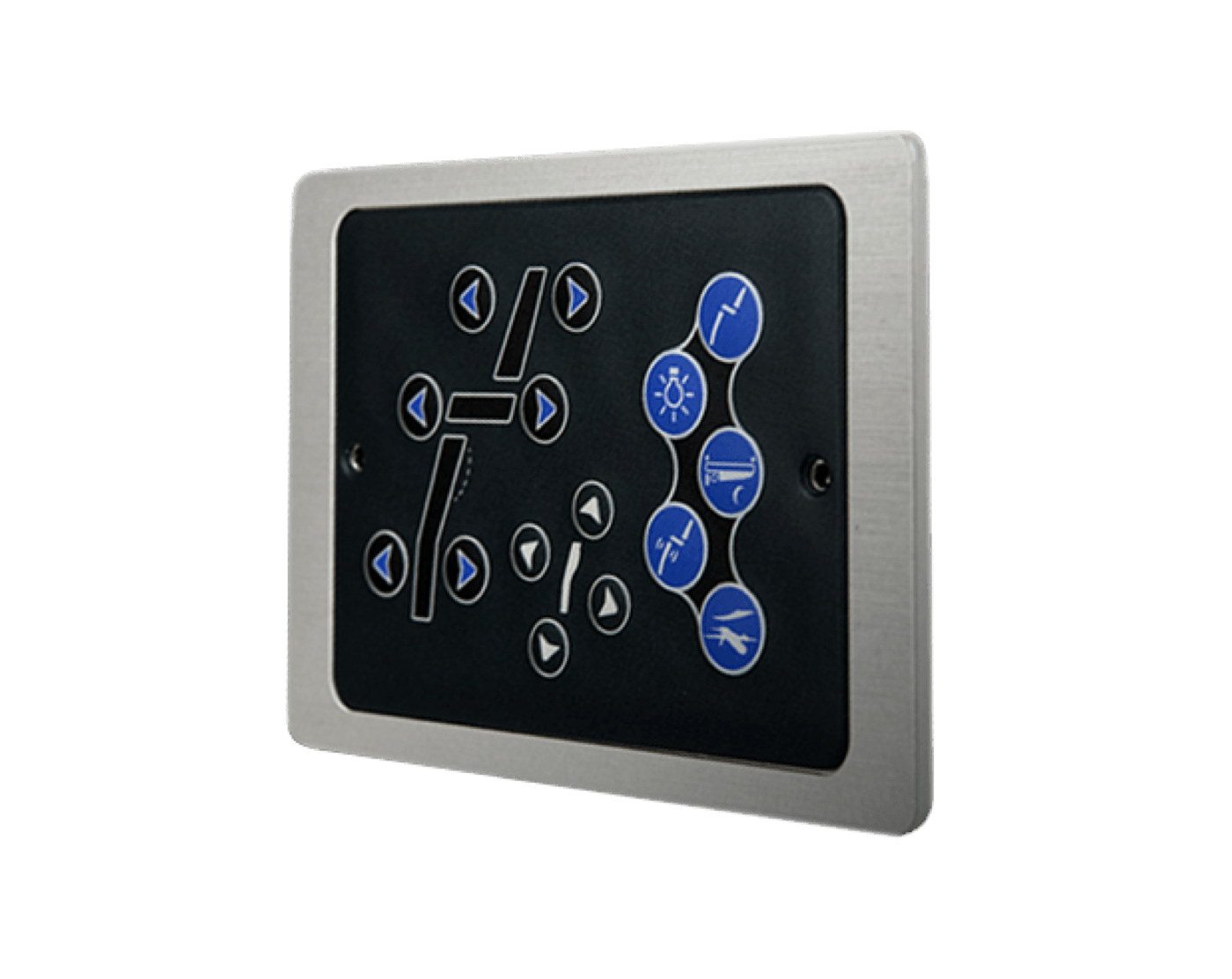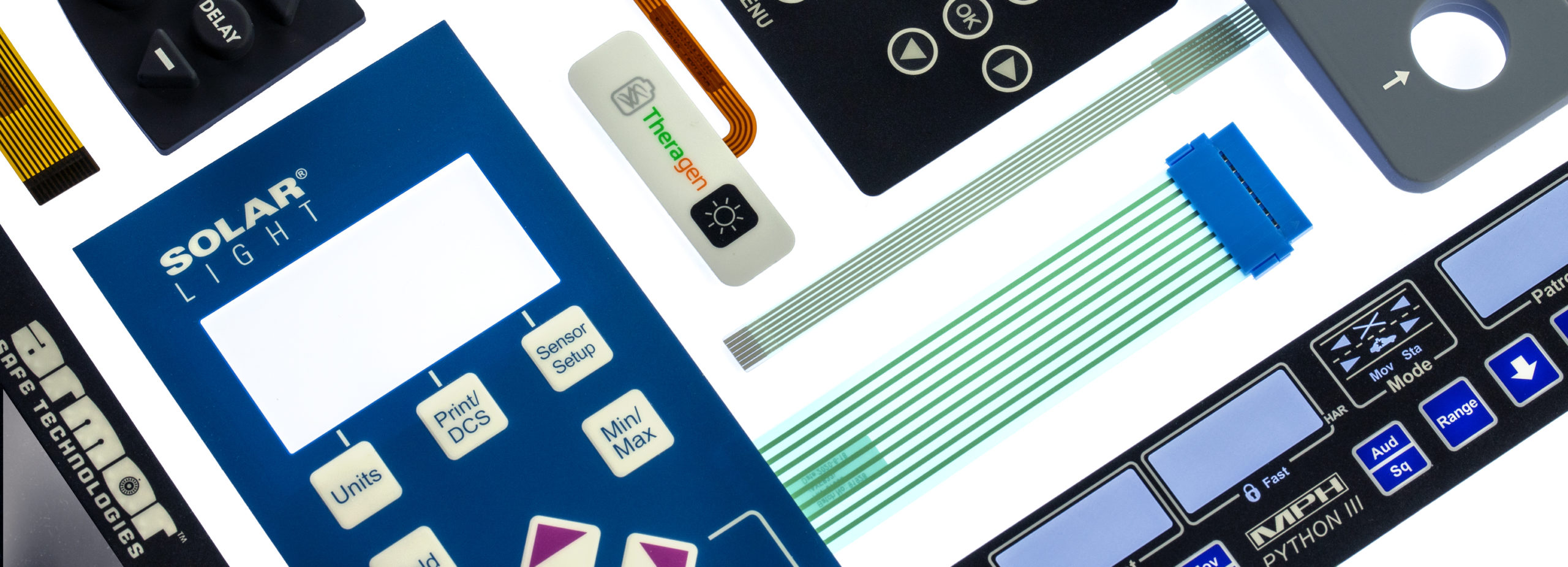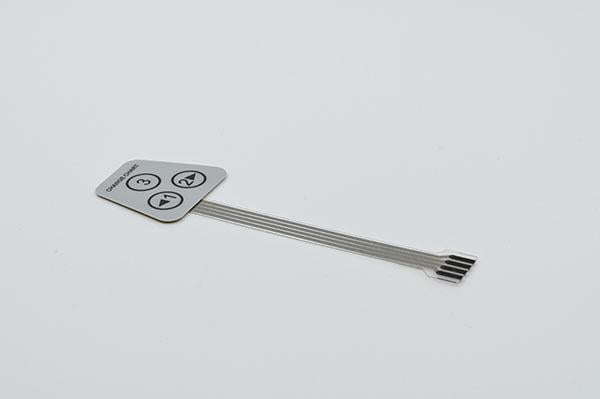Everything About Membrane Layer Switch: Comprehending Its Layout and Capability
When you consider the control interfaces in modern gadgets, membrane layer switches usually enter your mind. These components are greater than simply switches; they mix style and capability flawlessly. Comprehending how they work and what makes them efficient can alter your viewpoint on daily electronic devices. There are nuances to their style and performance that you may not be conscious of. Let's explore what collections membrane changes apart from other control systems.
What Are Membrane Layer Switches?

Their smooth nature makes them simple to tidy and immune to dust and wetness, a crucial attribute in many settings. Membrane switches can likewise be tailored pertaining to shape, size, and graphics, permitting suppliers to produce unique interfaces tailored to particular items. And also, they're lightweight and thin, which helps in lessening the overall mass of devices. On the whole, membrane buttons play a considerable role in boosting customer experience across a large array of applications.
Exactly How Membrane Layer Switches Over Job
When you press a trick on a membrane switch, it turns on an uncomplicated yet effective device. The leading layer, typically made of versatile material, pushes down onto a conductive layer beneath it. This action bridges the gap in between conductive traces, finishing an electric circuit. As quickly as the circuit shuts, it sends a signal to the tool's controller, which translates your input.
You'll see that the responsive responses varies based upon the button design, using either a soft click or an extra obvious reaction. Once you release the trick, the membrane layer returns to its initial position, reopening the circuit and quiting the signal. This process happens practically immediately, making certain a receptive individual experience.
Membrane switches are preferred because of their durability and resistance to dirt and wetness, making them perfect for numerous applications, from household home appliances to clinical gadgets. Understanding this operation aids you appreciate their prevalent usage.
Secret Components of Membrane Layer Buttons
Understanding the crucial components of membrane buttons is fundamental for grasping their capability and design. The safety layer shields versus ecological factors and use, expanding the button's life-span. By understanding these elements, you'll get insight right into how membrane switches run and their value in various applications.
Materials Made Use Of in Membrane Change Layout
The performance and longevity of membrane layer changes greatly depend on the materials made use of in their layout. You normally come across polyester and polycarbonate as key substrates due to their exceptional strength and versatility. These products withstand scratches and chemicals, making them suitable for requiring atmospheres.
The conductive layers often make use of silver or carbon, selected for their dependability and conductivity. membrane switch manufacturer. Silver provides exceptional performance, while carbon is a cost-effective choice. For the overlay, you could take into consideration a matte or glossy coating, depending on your visual requirements and user experience
Adhesives play a necessary duty also; they bond layers firmly and guarantee durability. Make specific to choose adhesives that hold up against environmental variables like temperature level and moisture. Do not overlook the value of an excellent printing technique for graphics, as it enhances both functionality and aesthetic allure. Choosing the ideal products will guarantee your membrane layer switch stands the examination of time.
Layout Considerations for Membrane Switches
While creating membrane buttons, it's crucial to take right into account various factors that affect their performance and user experience. Start by concentrating on the layout and button size; ensure they're intuitive and easy to browse. Consider the tactile responses you desire to give-- will customers require an obvious click or a softer touch? Additionally, assume about the materials you'll utilize, as they'll influence resilience and aesthetics.
Don't forget the graphic style; clear labeling and color comparison are considerable for exposure. Verify your layout accommodates environmental factors, like dampness or temperature variations, which can impact performance. Ultimately, bear in mind the relevance of screening models with genuine individuals to collect responses and make needed adjustments. This iterative process helps you fine-tune the design, validating it satisfies both functional and aesthetic demands successfully. By meticulously thinking about these aspects, you'll produce a membrane button that boosts use and contentment.
Applications of Membrane Layer Buttons
Membrane switches are functional elements located in different applications, from commercial equipment to customer electronic devices. You'll see their impact in machines that call for resilient interfaces and in gadgets that gain from sleek designs. Recognizing these applications assists you view website appreciate the capability and practicality of membrane buttons in everyday modern technology.
Industrial Tools Use
When you're seeking to enhance the performance of industrial tools, membrane layer switches offer a reliable solution that incorporates longevity with straightforward style. These buttons are best for harsh atmospheres, offering resistance to dust, dampness, and chemicals. You'll find them in control panels for producing machines, HVAC systems, and medical devices, where precision and responsiveness are vital. Their low account suggests they fit perfectly right into different equipment, saving important area while preserving ease of use. With personalized graphics and backlighting alternatives, you can develop an intuitive user interface for operators, enhancing performance and safety. And also, their lengthy life-span minimizes upkeep costs, making them a wise financial investment for your industrial applications. Welcome membrane layer buttons to simplify your operations and enhance total performance.
Customer Electronic Devices Combination
In the domain name of consumer electronics, membrane switches play an important role in boosting customer communication and tool performance. Membrane layer buttons additionally assure longevity and resistance to dirt and wetness, prolonging the lifespan of your electronic devices. By picking membrane layer buttons, you improve not just the performance however also the style of your tools, making everyday interactions smooth and look at this website satisfying.
Benefits and Drawbacks of Membrane Switches
While membrane layer switches supply a variety of advantages, they also include some downsides that you should think about. One significant benefit is their portable design, making them perfect for space-constrained applications. They're also cost-effective, giving a sturdy option with a low production price. Furthermore, their smooth surface area is very easy to clean, improving hygiene in environments like medical facilities.

Nevertheless, there are drawbacks. Membrane layer switches can have a much shorter life expectancy compared to mechanical buttons, specifically under hefty use. They can additionally be much less responsive, which may impact user comments during procedure. If damaged, fixing them can be challenging and frequently requires total substitute. Inevitably, their level of sensitivity to extreme temperatures and environmental conditions may limit their effectiveness in specific settings. Balancing these pros and disadvantages will aid you establish if membrane switches are the best suitable for your task.
Regularly Asked Inquiries
Just How Long Do Membrane Switches Over Normally Last?
Membrane switches over typically last in between 5 to 10 years, depending on use and ecological problems. You'll want to evaluate factors like wear, exposure to moisture, and temperature level changes to determine their durability efficiently.
Can Membrane Switches Over Be Customized for Particular Layouts?
Yes, you can personalize membrane layer switches to fit details layouts (membrane switch manufacturer). You'll have the liberty to choose shades, forms, and formats that match your job's needs, guaranteeing they mix effortlessly with your total aesthetic
What Is the Expense Range for Membrane Layer Switch Over Production?
The cost variety for membrane layer button manufacturing usually falls in between $1 and $10 each, depending on aspects like style complexity, amount, and materials. You can get quotes from suppliers to find the finest option.

Are Membrane Layer Switches Over Water Resistant or Immune?
Membrane layer buttons can be created to be water resistant or immune, relying on materials made use of and construction techniques. If you require them for damp settings, ensure you specify those demands during the style process.
Just How Do Membrane Changes Contrast to Standard Switches?
Membrane layer buttons are generally thinner and more flexible than traditional buttons, providing a sleek style. They're usually less complicated to clean and integrate, yet might not Click Here give the responsive comments you're used to with mechanical alternatives.
Conclusion
